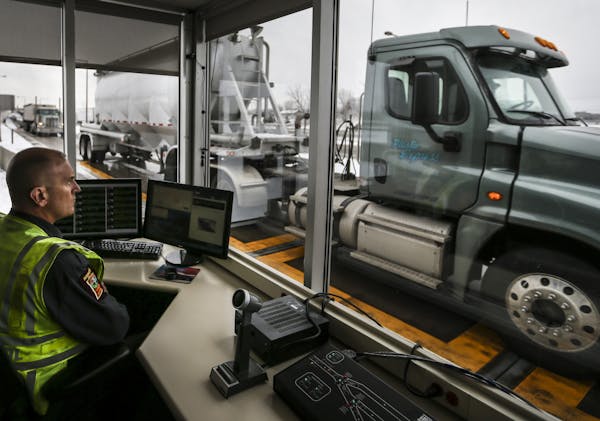Mike Tomars spends most days inside his darkened St. Paul home, trying to stave off the headaches and nausea that have plagued him since a semitrailer truck rear-ended the company car he was driving five years ago during a blizzard.
The crash fractured his skull and left Tomars, 55, with such severe head injuries that he won't be able to work again. Once an enthusiastic gardener and successful insurance claims investigator, Tomars now can't stand bright sunshine or noisy crowds. He can't even read for very long.
"After, like, 45 minutes to an hour, I start having a panic attack," he said. "My neurologist explained that part of my brain is dead."
Even though the trucking company settled with Tomars for $300,000 above its $1 million insurance policy, he and his relatives fear he will end up on public assistance someday because the money won't cover his long-term living expenses.
Large general freight trucks are required to have $750,000 in liability insurance — a minimum that hasn't changed in the past 30 years. In Minnesota, the minimum is lower for large commercial trucks that don't leave the state: $100,000 per person or $300,000 per crash.
The Federal Motor Carrier Safety Administration, which regulates the trucking industry, is considering whether to require truckers to carry higher insurance policies. While catastrophic trucking crashes are relatively rare, a government study found that the current minimum has not kept pace with medical costs. The $750,000 minimum set in 1985 equated to $3.2 million in 2013, the agency reported.
A possible increase, backed by plaintiffs' lawyers and safety advocates, is raising protests from small trucking companies — which are the vast majority of carriers. Their owners contend that higher insurance premiums could drive them out of business.
The federal agency noted that inflation-adjusted insurance rates have declined over the years, however.
Opponents point to data showing that catastrophic crashes with damages above minimum levels make up less than 1 percent of all commercial motor vehicle crashes — roughly 3,300 out of 330,000 crashes a year.
Scott Grenerth, director of regulatory affairs for the Owner-Operator Independent Drivers Association, which also sells insurance to its members, said nobody really knows what will happen to premiums if minimums are raised. But, he said, the current minimums are effective "over 99 percent of the time. It absolutely should be viewed as a success."
Plaintiffs' attorneys who have lobbied for the change contend that the revision is long overdue and should happen periodically.
"Insurance was going to be the gatekeeper" for safety, with safe companies enjoying lower premiums, explained Inver Grove Heights attorney Peter Kestner, a former insurance claims examiner who now litigates truck cases and has lobbied on the issue in Washington. "Our position is: If they can't spend a little bit more on insurance, are they spending money on maintenance?"
In Tomars' case, wage losses from his insurance job and a weekend side job exceeded $1.6 million over his lifetime, his attorney said.
Even with reduced attorney fees, Tomars netted only about $600,000 from his settlement with the trucking company after subtracting other required expenses, including reimbursing some insurance payments, his attorney said. He is also getting workers' compensation, Social Security disability payments and is on Medicare for health problems not related to the crash.
Tomars is also in a legal battle with his former employer, Progressive Casualty, for more money.
Progressive said in a statement that Tomars was a dedicated employee and company officials are "committed to continuing to engage with him to support his ongoing recovery," but they declined to comment further because the case is still pending.
Tomars' attorney, Sheila Donnelly-Coyne, said commercial vehicles should be better insured to cover their costs: "To make the individual, and then sometimes the public, bear the cost of something that's really a cost of doing business, it's not fair or right."

University of Minnesota police arrest 9 after pro-Palestinian encampment set up on campus
2 dead in Lino Lakes, no known threat to public, police say
Teen charged with murder in deadly St. Paul shooting last month

